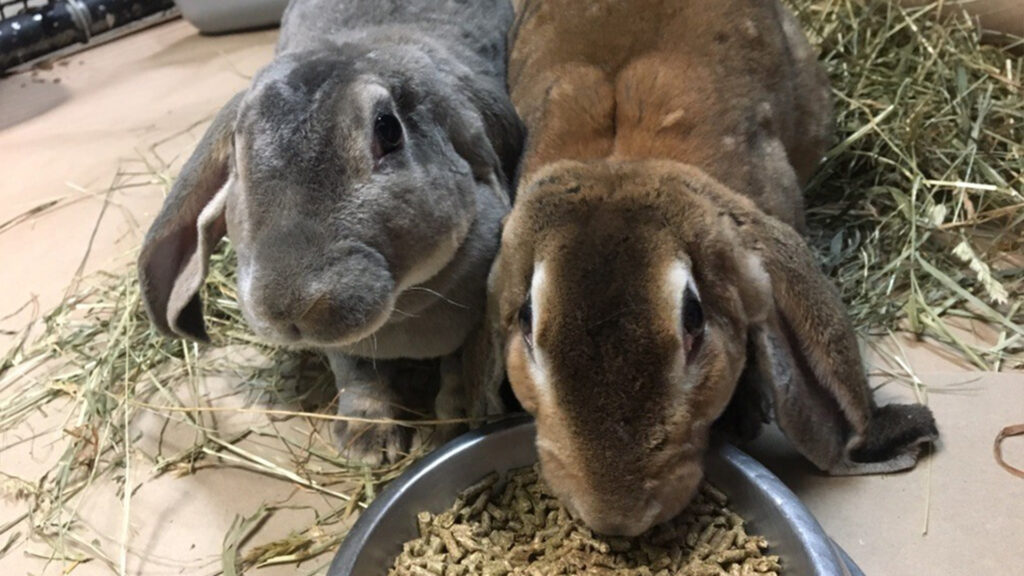
Here are answers to those questions about the Velveteen Lop:
- Special Care for Velveteen Lop’s Rex Fur:
The Velveteen Lop has very soft, dense Rex fur that feels plush and velvety. This fur requires gentle grooming to avoid damaging the delicate texture. Unlike longer fur breeds, it doesn’t mat easily but still benefits from weekly brushing to remove loose hairs and keep the coat healthy. Their fur is also more sensitive to humidity and dirt, so a clean, dry living space is important. - Temperament Compared to Other Lop Breeds:
Velveteen Lops are known for their calm, affectionate, and friendly nature. They tend to be more docile and less skittish than some other lop breeds, making them excellent pets for families and first-time rabbit owners. They enjoy gentle handling and can form strong bonds with their humans. - Lifespan and Common Health Issues:
The average lifespan of a Velveteen Lop is around 7 to 10 years, which is typical for medium-sized rabbits. Common health issues include dental problems due to their lop ears affecting jaw alignment, as well as ear infections from their folded ears. Regular vet checkups and good diet are important to maintain their health. - Environmental Sensitivities:
Because of their soft Rex fur and lop ears, Velveteen Lops can be more sensitive to extreme temperatures. Their fur doesn’t insulate as well as thicker fur breeds, so they need protection from very cold or hot weather. Their lopped ears also make it harder for them to regulate ear temperature and can increase the risk of ear infections in damp or dirty conditions. - Rarity and Conservation Efforts:
The Velveteen Lop is considered a rare breed, partly because it is relatively new and selectively bred to combine Rex fur with lop ears. Breeders and rabbit enthusiasts are working to maintain and promote the breed through dedicated breeding programs, showing them in competitions, and educating the public about their unique qualities to help preserve them.
Certainly! Here are some images of the Velveteen Lop rabbit, showcasing their distinctive features:




These rabbits are known for their soft, velvety fur and long, floppy ears, making them both adorable and unique. Their gentle and affectionate nature also makes them wonderful companions.
Absolutely! Here’s a deeper dive into the Velveteen Lop rabbit breed:
Origins & History
- The Velveteen Lop is a relatively new and rare breed that has been developed by combining the Rex rabbit and lop-eared rabbits.
- The Rex rabbit is famous for its plush, velvety fur, while lop breeds are known for their long, floppy ears.
- Breeders worked to create a rabbit that had both the soft Rex fur and the charming lopped ears, resulting in the Velveteen Lop.
- Because this combination is quite specialized, the breed is still uncommon and prized among rabbit fanciers and collectors.
Physical Characteristics
- Size: Velveteen Lops are generally medium-sized rabbits, weighing anywhere from about 5 to 8 pounds (2.3 to 3.6 kg) depending on lineage and care.
- Body Type: They have a compact, well-rounded body typical of lop breeds, with a sturdy build and a broad head.
- Coat: Their fur is short but very dense and soft — the Rex fur stands out because the guard hairs and undercoat are the same length, making it smooth and plush. It’s a unique tactile experience compared to regular rabbit fur.
- Ears: Their trademark lopped ears hang down softly on either side of their head, usually about 6 to 7 inches in length.
- Color: They come in various colors and patterns, ranging from solid to broken or spotted patterns, including shades like chestnut, blue, black, and more.
Personality and Temperament
- Velveteen Lops are typically gentle, calm, and sociable rabbits.
- They tend to bond closely with their owners and can be affectionate pets.
- Like many lop breeds, they enjoy being handled but also appreciate space to hop and explore.
- They can adapt well to indoor living with proper care and enrichment.
Care Requirements
- Grooming: Their Rex-type fur requires regular grooming, but since their coat is short and velvety, it usually doesn’t mat easily.
- Diet: Like all rabbits, they need a diet rich in hay, fresh vegetables, and clean water, plus occasional pellets.
- Housing: They thrive in spacious cages or hutches with access to exercise areas.
- Health: Watch for common rabbit health issues like dental problems, ear infections (especially with lopped ears), and gastrointestinal stasis. Regular vet check-ups are essential.
Challenges & Considerations
- Because Velveteen Lops are rare, finding a reputable breeder may take some effort.
- They can be more expensive than common breeds due to their rarity and unique coat.
- Potential owners should be prepared for the commitment of caring for a rabbit with special grooming and health needs.